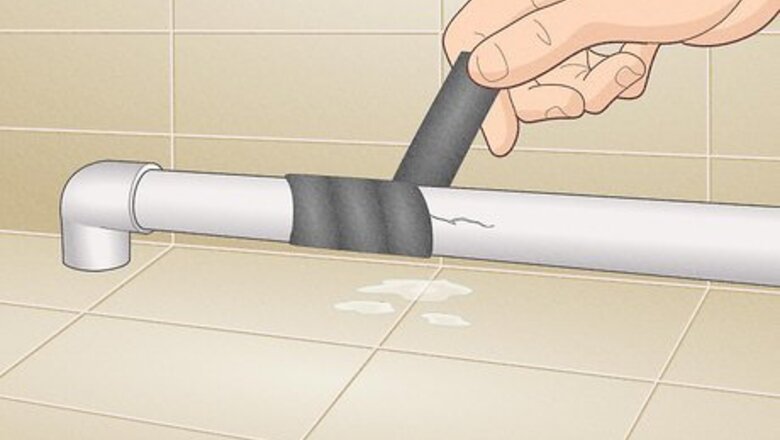
views
Quick Fixes
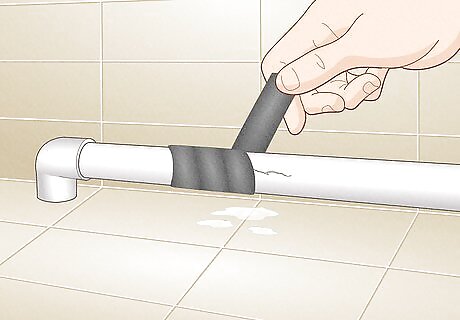
Use pipe repair tape to quickly patch up cracks and leaks. Pipe repair tape helps compress the crack, which helps stop leaking. Cut off a long section of tape and wind it around the crack. Continue looping the tape to the left and right of the crack to make sure the leak is totally covered.
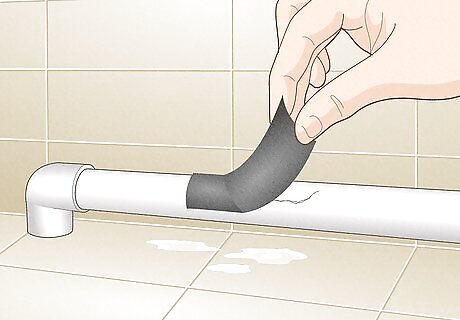
Cover the damage with a sticky patch as a simple solution. This product is basically a heavy-duty band-aid for your pipe. Remove the sticky patch from its packaging, and peel away a clear sheet—this is covering the sticky side. Press the patch over the crack, pressing your thumbs along the edges to hold it in place. You can find this type of patch online, or at a home improvement store.
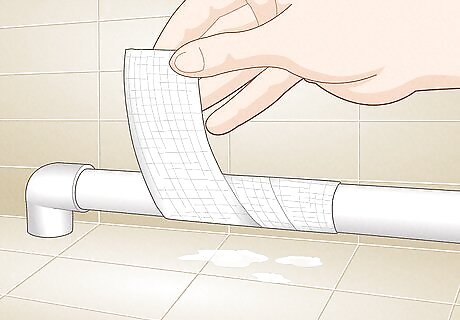
Seal the crack with fiberglass tape as a temporary fix. Fiberglass tape uses water to create a hard surface over the pipe. Wet the surface of the pipe with a damp towel so the resin tape sticks better. Then, wind the fiberglass resin tape over and around the crack until the leak is completely covered. Give the resin 15 minutes to harden all the way. Unlike the other options listed here, fiberglass tape isn’t a permanent fix—however, it’s a good solution if you’re in a pinch.
Epoxy Putty
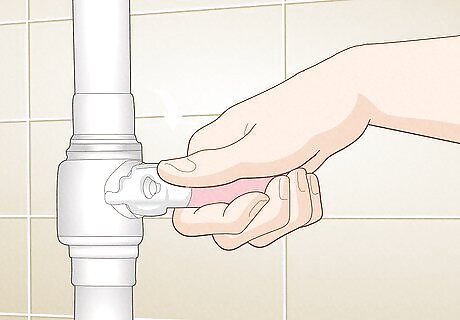
Shut off the water to your PVC pipe. You don’t want any water going through your pipes while you’re making repairs. Your shut-off valve might be in your basement, or could be in a crawl space, depending on the layout of your home.
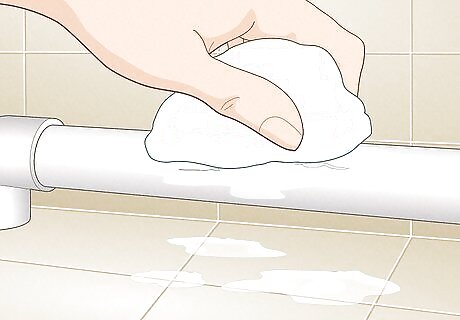
Wipe down the leaky section of pipe. Grab a clean cloth and dry off any leftover leaks or spills from the surface, along with any dirt or grime.
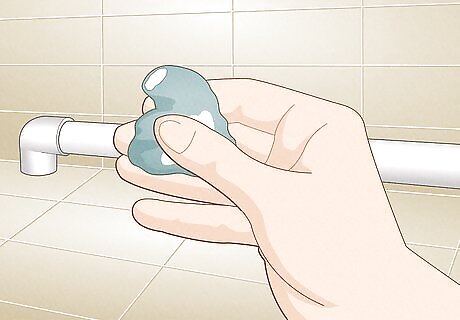
Follow the packaging directions to form the putty. Pick up a package of epoxy from your local hardware store. Epoxy often comes in a stick made with a hardener and a resin. Grab a pair of scissors and cut off the amount of epoxy you need to repair the crack in your PVC. Then, knead the resin and hardener together until it molds into a consistent color. Double-check the packaging for specific directions on how to knead the putty.
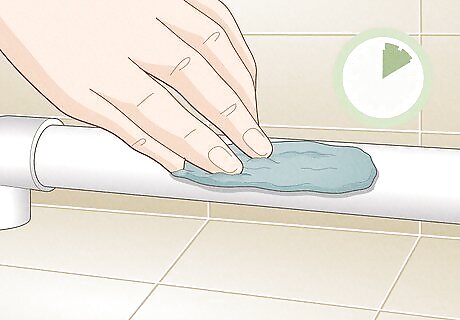
Spread the putty around the crack and wait 10 minutes. Stretch and mold the epoxy around the cracked area. Check that the crack is completely covered with the putty before letting it dry. Then, wait 10 minutes so the epoxy putty can cure.
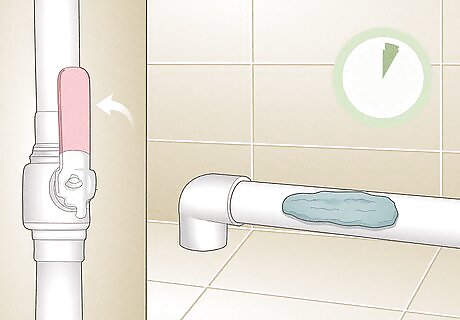
Wait 1 hour before turning the water on. Your epoxy putty will be hard to the touch in about 10 minutes. To be safe, wait an hour before resetting the water lines. If the pipe still seems leaky, try applying a little more epoxy putty!
Pipe Replacement

Turn off your water supply. Since you’ll be cutting out the old section of pipe, you don’t want any water flooding your workspace. Your shut-off valve could possibly be in the crawl space or basement of your home.

Saw off the broken section of PVC pipe. Measure how long the crack in your pipe is. Add 1 in (2.5 cm) to each side, and cut off this entire length with a ratchet cutter or hacksaw. This helps ensure a thorough, sturdy repair. As you remove the piping, some leftover water might leak out, even if the water lines are shut off. That’s perfectly fine—just blot it with a clean towel. A PVC cutter is a great way to cut your pipes, but a simple hacksaw also works just fine.
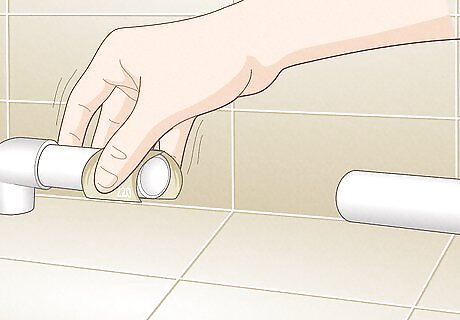
Sand the exposed ends of the original PVC pipes with 100- to 220-grit sandpaper. Keep buffing the surface until it feels mostly smooth. This process may seem a bit excessive, but it makes it easier to fit and install a new piece of pipe.

Cut a new section of PVC pipe. Measure between both cut ends of the PVC pipe. Using this measurement, cut a new section of PVC pipe that’s about the same size as the pipe you just removed. Cut this new section of pipe so it’s a few millimeters smaller than the gap—this way, you can slide the new pipe into the fittings easily. You could also measure the old piece of PVC that you just cut off.

Grab 2 straight PVC pipe coupling joints and file one down. Most PVC pipe fittings have a groove or “stop” along the inside, which helps hold the fitting in place. Grab a half-round file and sand down this groove, so your fitting slides easily onto the pipe without stopping. Removing the inner groove offers a bit more flexibility as you install a new section of pipe.

Attach the first fitting with PVC solvent and cement. Spread a layer of PVC solvent along 1 of the exposed ends of your old PVC pipe. Then, spread a layer of PVC cement on top of the solvent. Slip the fitting onto 1 of the exposed ends of the original PVC. Hold it in place for about 15 seconds. PVC solvent helps prep the pipe for the glue.

Prep both ends of the new pipe section with PVC solvent. Coat each pipe in 1 in (2.5 cm) sections along both ends, so the cement holds well.
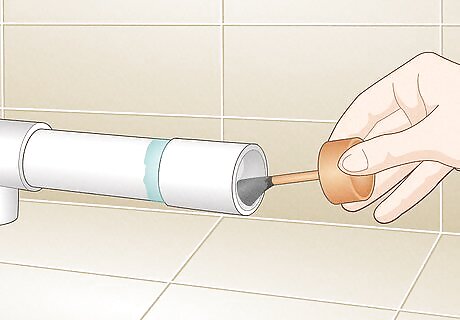
Apply cement to the inside of the fitting and 1 end of the new PVC pipe. Coat the cement all over the PVC solvent, along with the inside of the fitting. This helps ensure that your glue is really secure.
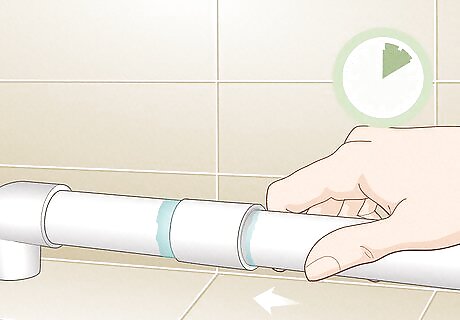
Secure the pipe into the fitting and let it set for 10 seconds. Slip the pipe completely into the fitting. Give the pipe a small twist, so the glue holds inside the pipe. Then, hold the pipe in place for 10 seconds.

Mark where the second PVC fitting will go. Hold the new section of PVC pipe so it’s snug against the original PVC. Align the center of the unused, filed fitting next to where these 2 pipes meet. Mark off where the end of the PVC fitting lines up along the old section of PVC pipe, so you have a reference point. Since you’ve sanded this fitting down, there are no grooves to automatically “stop” the coupling from sliding too far down the pipe. This mark helps you know how far the new fitting needs to slide onto the old piping.
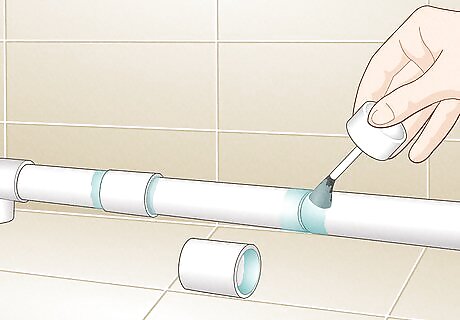
Apply PVC solvent on the exposed end of the old pipe and inside the second fitting. As you did before, spread the solvent over the bottom 1 in (2.5 cm) or so of the pipe. Then, grab the fitting that you filed down earlier and spread the solvent around inside, so the glue will hold really well.

Spread cement along both ends of the PVC pipe. Grab your PVC cement and spread it over the PVC solvent. Don’t put any inside the fitting—you’ll have enough on the ends of your pipes.
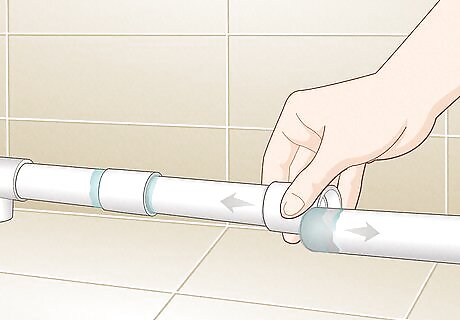
Install the new section of PVC pipe. Slip the fitting along the new section of pipe first. Then, slide it onto the old, original PVC piping. Continue pushing and sliding the fitting up and down until it lines up with the reference point you drew earlier.

Hold the pipe in place for 10 seconds to make sure it stays put. Then, wait about 15-30 minutes for the adhesive to dry completely before turning your water back on and using your pipes again.

















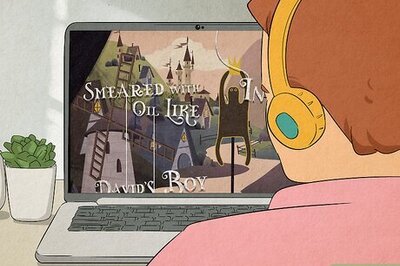
Comments
0 comment